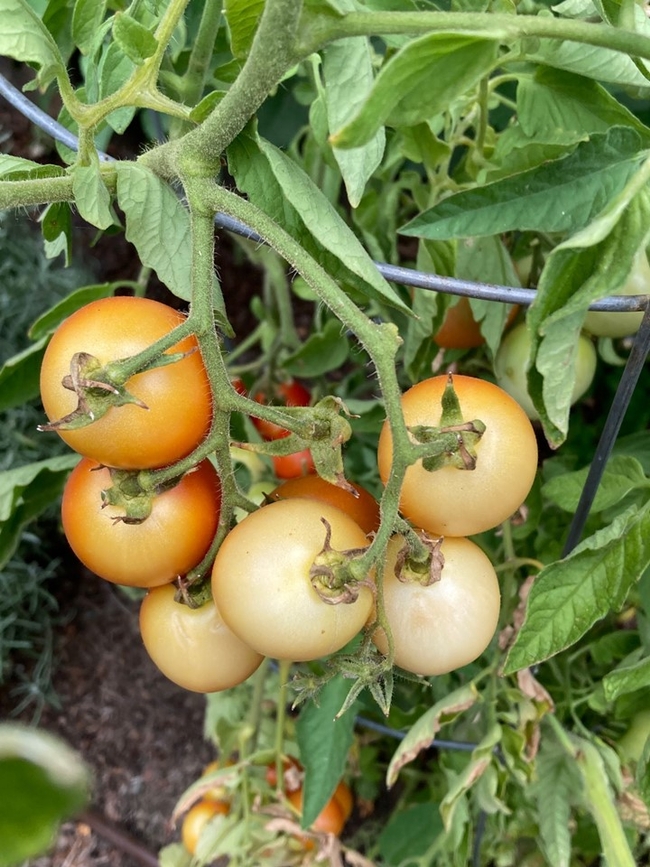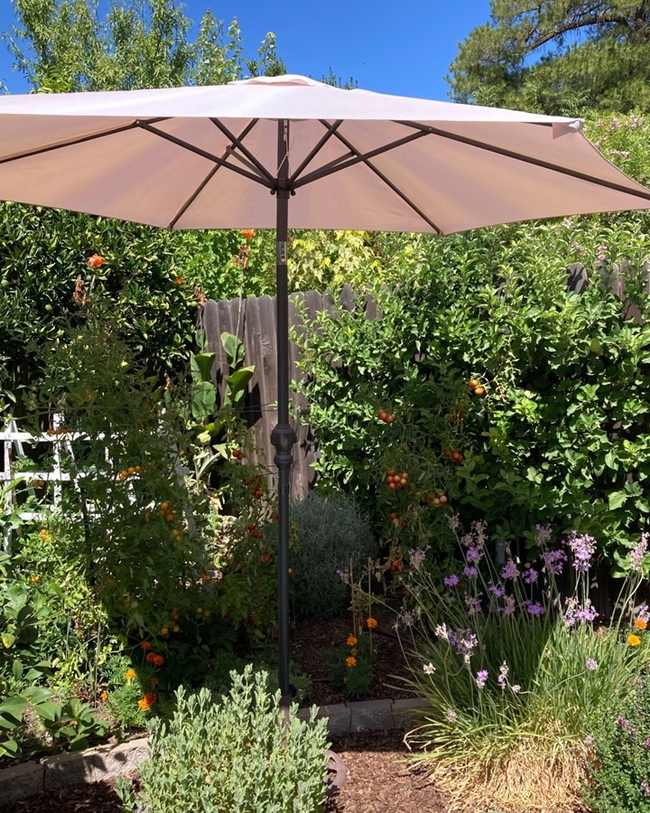- Author: Carolle Juliano
If you live in the California Central Valley and fancy yourself a summer vegetable gardener, you've probably tried your hand at growing tomatoes. And that's all types of tomatoes, from slicers, to cherries to heirlooms to beefsteak. After all, our neighboring city and state capitol is nicknamed “Sacratomato” for a reason. In years past, the hot summer air of Davis was heavy with the scent of processed tomatoes from the Hunt Wesson Cannery and street intersections were marked with red orbs spilled from the open-topped transport trucks.
Times do change, however. The cannery is gone and the number of commercial tomato fields has diminished. But home gardeners persist in their pursuit of the perfect tomato, however vexing and challenging the current environment is. With temperatures reaching triple digits regularly and for extended periods during our summers, “full sun” has taken on a damaging effect. Case in point, my 'Fourth of July' indeterminate tomato plant.
Most of its fruit show signs of solar yellowing caused by high temperatures (above 85 degrees F) accompanied by high light intensity. The normal red coloring of a tomato is lycopene. This fails to form at 86 degrees F, leaving carotene, which is either yellow or orange, as the sole fruit coloring.
But if you look closer, beyond the discoloration, you'll notice something else. Look at the flattened, whitish area on the top of the lower right tomato. That's radiation damage caused by intense sunlight. In actuality, it's sunburned or “sunscalded”. Left exposed to more sun, the skin will deteriorate further to become paper thin and vulnerable to bacteria or fungi.
Once the damage is done, there is no remedy. Fortunately, if no pathogen has set claim, the fruit is still edible with the scalded portions removed.
So what can be done to prevent future sunburn since scientific models predict an ever-increasing heat index? To start, backyard gardeners can be selective regarding the tomato varieties they choose. For example, I now know that the 'Fourth of July' is a small-leafed plant unable to fully shade its fruit. Next year, I'll look for plant varieties with broader leaves and more shade potential. That might include 'Celebrity' or 'Champion' varieties, both on the UCCE Master Gardeners of Yolo recommended list.
On the other hand, Sungolds (growing next to the suffering 'Fourth of July' plant) seem to thrive in high temperatures and full sun exposure, producing consistent, sweet fruit. Or perhaps it's time to move the veggie garden to a different part of the yard with an easterly exposure, which would afford plenty of sunshine but avoid the harshest part of the afternoon heat. Another option might be moveable pots.
However, this year, I've opted for a different approach. Welcome to my tomato resort where tomatoes have it “made in the shade” cool ??.



